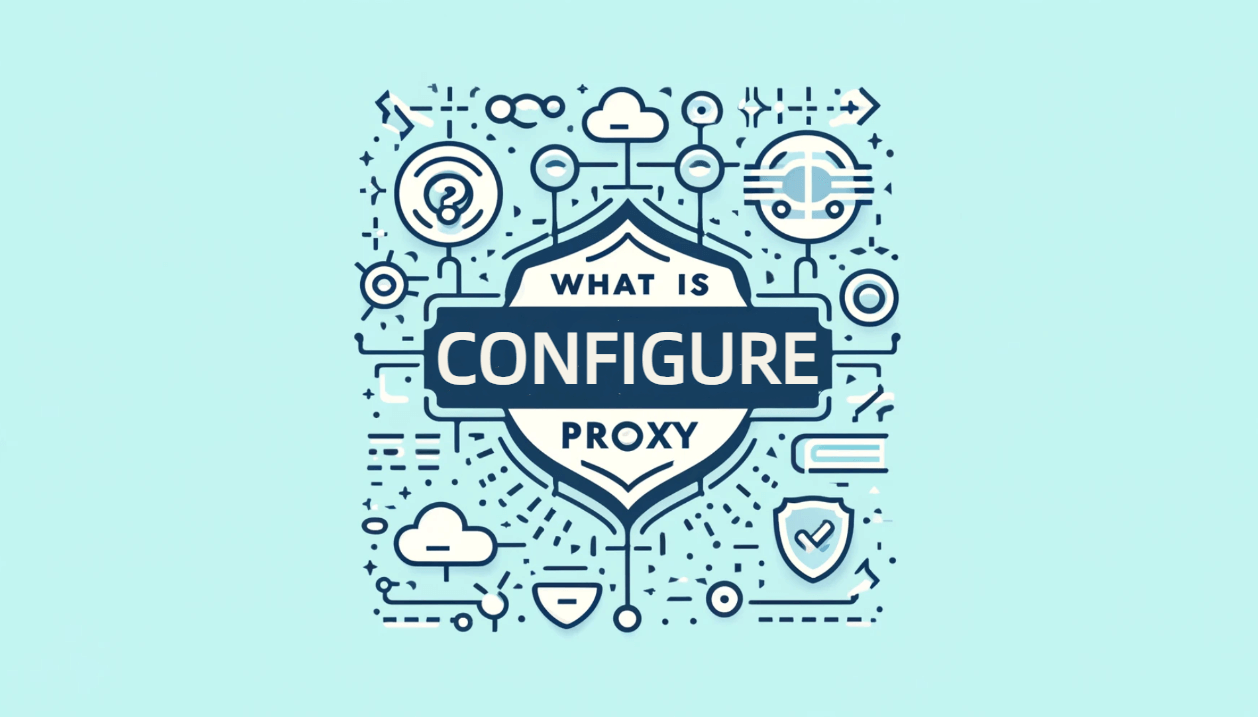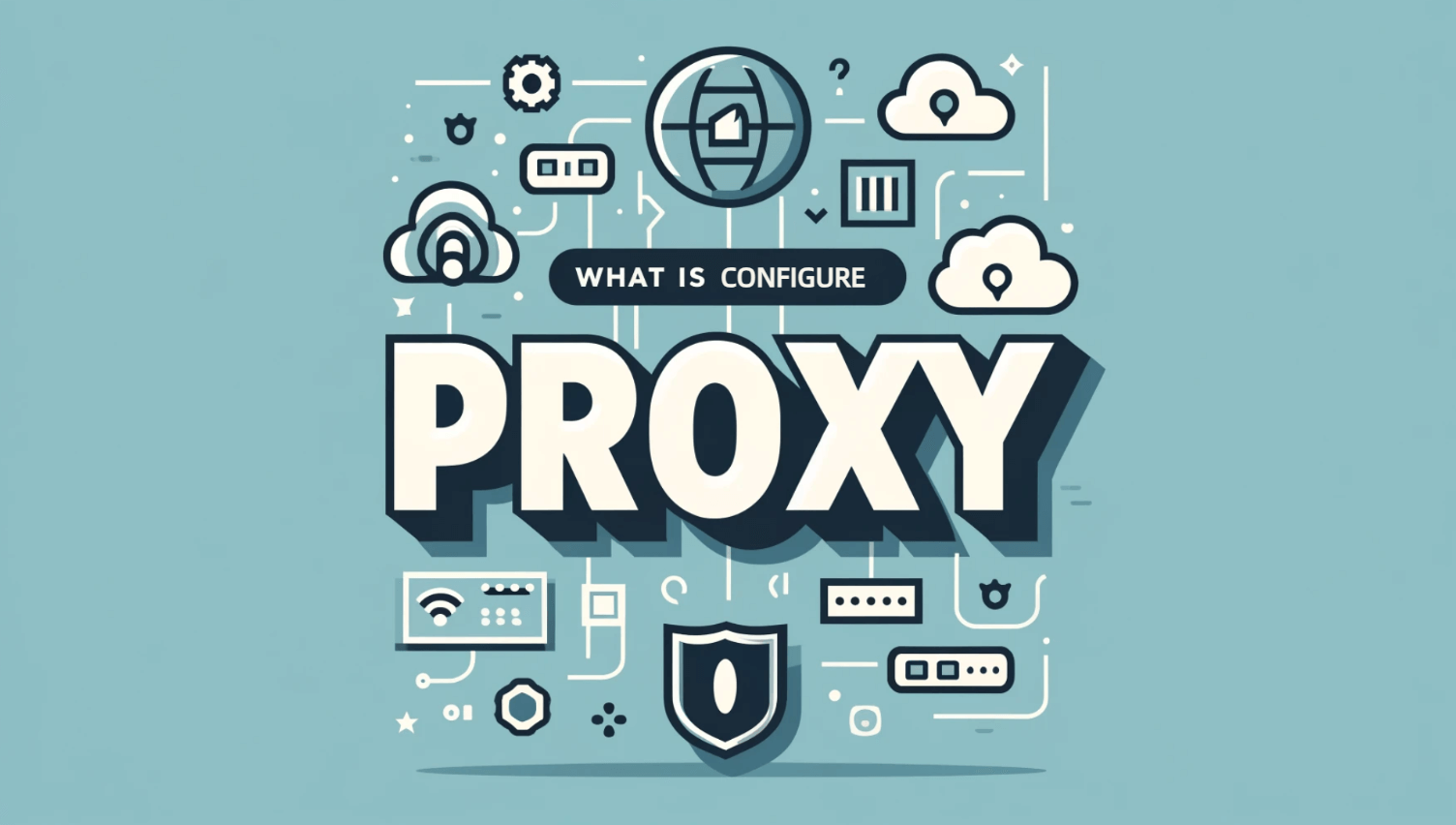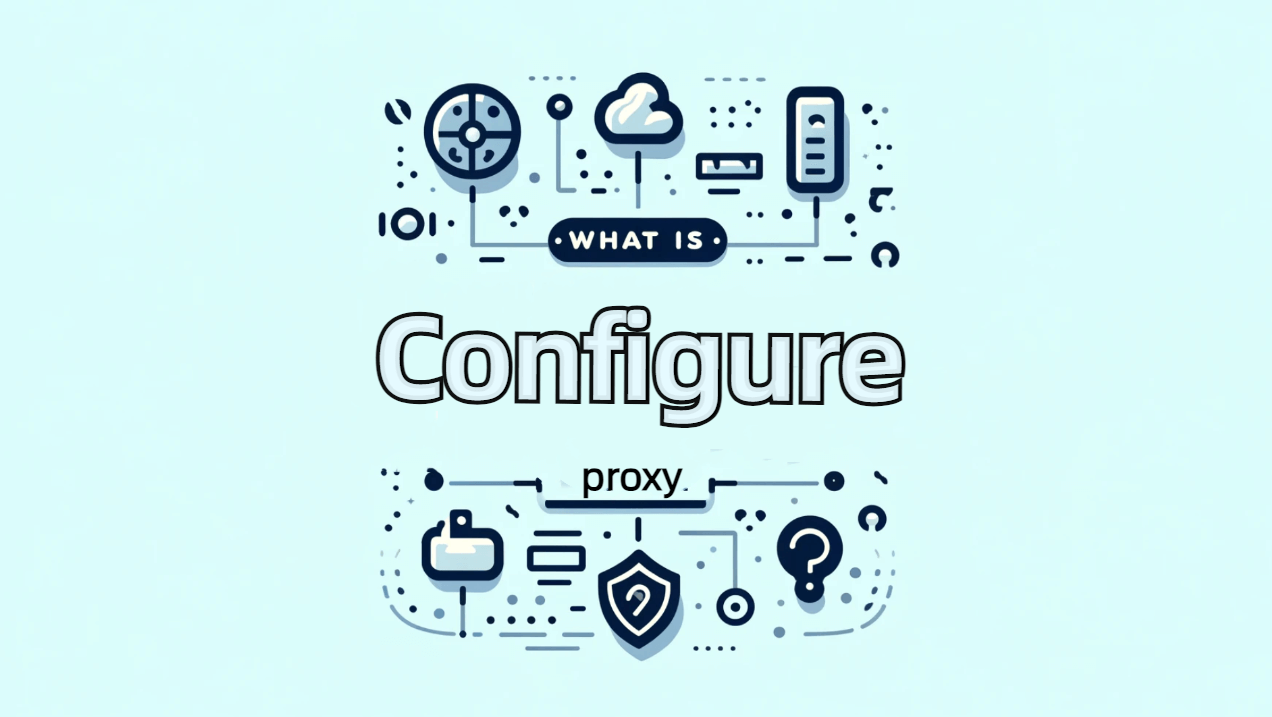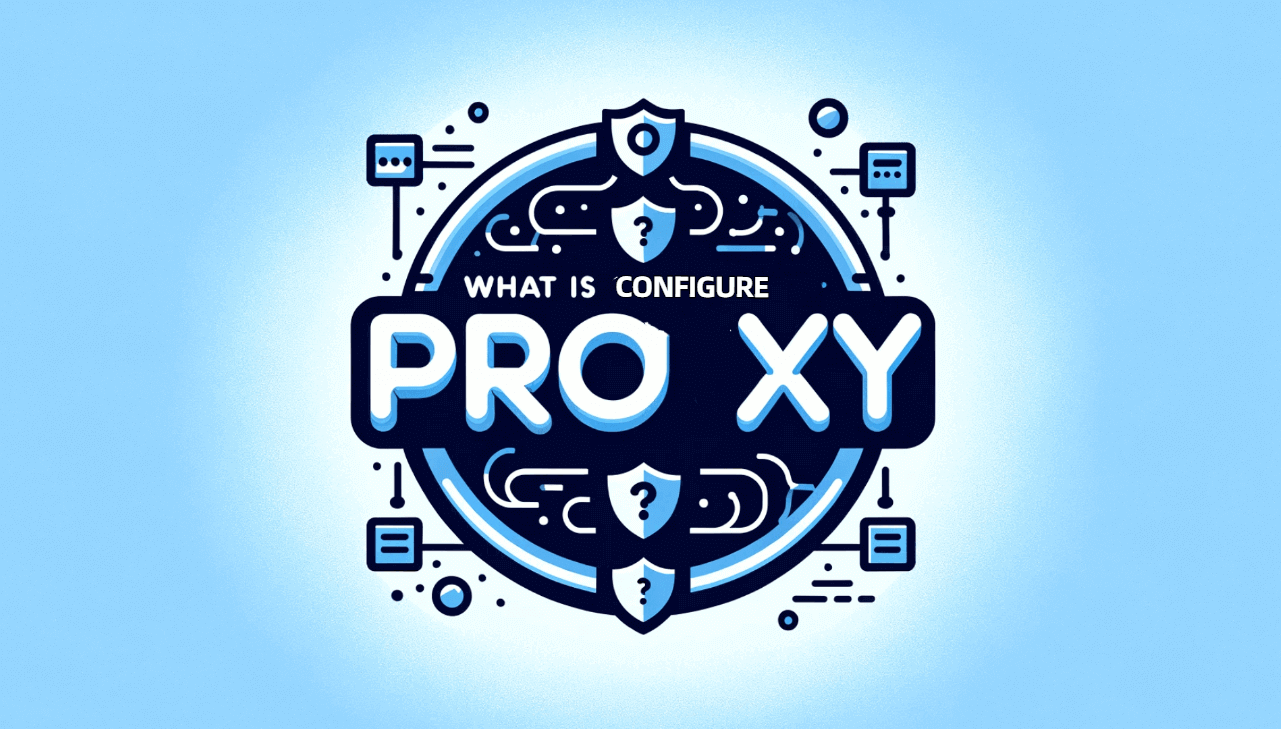What Is Configure Proxy and How to Set Up

Proxies can speed up frequent requests by caching data, improve security by encrypting your requests, restrict access to internet resources, and promote privacy and security by hiding your IP address. In this post, we explore the benefits and common issues with configuring a proxy. You can quickly learn how to set up a proxy on many operating systems, including Windows, macOS, Linux, Android, and iOS, whatever your level of experience with the internet.
What is Configure Proxy?
Setting up your internet connection to go via a proxy server is known as proxy configuration. This middleman server offers different degrees of functionality, security, and privacy while dividing people from the websites they visit. By configuring a proxy, you may achieve content filtering, enhanced security, and anonymous surfing by effectively sending your internet requests through a different server before they arrive at their intended destination.
What are Proxy Servers and Types of Proxies
Understand the basics of what a server is and how it works before getting into the technicalities of installing a proxy. Proxy servers provide as a point of entry for the internet. They operate as a middleman server, putting users and the websites they visit on different pages.
Proxies typically come in three primary varieties, each with unique characteristics and uses:
- HTTP proxies: Web-based traffic is the intended use case for HTTP proxies.
- SOCKS5 proxies: Because of their wider range of applications, SOCKS5 proxies are slower than HTTP proxies but are more adaptable and able to handle all kinds of traffic.
- SSL (or HTTPS) proxies: SSL proxies provide safe interactions between browsers and websites by encrypting your data.
Benefits of Configuring a Proxy
Setting up a proxy server improves security and privacy, limits internet consumption, and expedites access to regularly accessed websites. The following are the advantages of setting up a proxy:
1. Enhanced Privacy
You may increase your online anonymity by hiding your IP address from the target server by using a proxy server to route your requests. This is especially helpful when reading sensitive information or when you wish to keep your surfing activities hidden.
2. Improved Security
With the ability to block harmful websites, advertisements, and other possible hazards, proxies may act as a security barrier between your device and the internet. Additionally, some proxy services encrypt your data to provide an additional layer of protection against prying eyes.
3. Access Restricted Content
Proxies are a great way to get around censorship and geo-restrictions. A proxy can provide you the access you require to websites restricted in your nation, streaming services, and region-locked material.

4. Better Performance
Web resources that are regularly visited can be cached by proxies, which expedites subsequent requests for the same resources. This can save bandwidth use and greatly speed up page loads.
5. Control and Monitoring
Proxy servers allow managers to enforce online restrictions, keep an eye on internet activity, and make sure rules are followed in business settings.
Common Issues with Configuring a Proxy
Setting up a proxy can occasionally add complexity, cause bottlenecks, and, if not protected correctly, constitute a point of attack. The following dangers can arise while setting up a proxy:
1. Complexity and Setup Errors
It might be difficult to set up a proxy, especially for new users. Incorrect setups may result in poor performance, connection problems, or even security flaws.
2. Performance Bottlenecks
Proxy servers can increase efficiency by caching data, but if they are not set up correctly or the proxy server is sluggish or congested, they can potentially create bottlenecks.
3. Potential Security Risks
Proxy servers are not always safe. You run the danger of malware infestations, data abuse, and data interception when you utilize an unreliable proxy service.
4. Compatibility Issues
Certain services and applications might not work properly when routed through a proxy, necessitating the creation of special settings or exceptions.
5. Legal and Ethical Considerations
Using proxies to get around geo-restrictions or access content that is blocked might provide ethical and legal issues based on the content and your jurisdiction.

How to Configure a Proxy on Different Platforms
The operating system and the device itself can have a little impact on how a proxy is configured on various devices. This comprehensive tutorial will assist you in configuring a proxy on several platforms:
1. For Windows
- Access Settings: Go to 'Settings' > 'Network & Internet' > 'Proxy'.
- Manual Setup: Under 'Manual proxy setup', turn on 'Use a proxy server'. Enter the proxy server address and port. If your proxy requires a username and password, make sure the service you're connecting to supports that.
- Save: Click 'Save' to apply your settings. Your Windows system will now route traffic through the proxy server.
2. For macOS
- Open System Preferences: Click on the Apple menu > 'System Preferences' > 'Network'.
- Select Network: Choose the network service you use (e.g., Wi-Fi or Ethernet) and click 'Advanced'.
- Configure Proxy: Go to the 'Proxies' tab, select the proxy type (e.g., Web Proxy (HTTP)), and fill in the proxy server details and port. Click 'OK' and then 'Apply' to save changes.
3. For Linux (Ubuntu)
- Open Network Settings: Go to 'Settings' > 'Network' and click on the gear icon next to your network connection.
- Set Proxy: Navigate to the 'Network proxy' section, select 'Manual', and enter your proxy settings for HTTP, HTTPS, and if necessary, FTP. Apply the settings.
4. For Android
- Access Wi-Fi Settings: Go to 'Settings' > 'Wi-Fi'. Choose 'Modify Network' by long-pressing on the linked Wi-Fi network.
- Modify Network: Scroll down, check 'Advanced options', and select 'Manual' under 'Proxy'. Enter the proxy hostname and port. Tap 'Save' when done.
5. For iOS (iPhone/iPad)
- Open Wi-Fi Settings: Go to 'Settings' > 'Wi-Fi'. When the Wi-Fi network you are connected to appears, tap the 'i' icon.
- Configure Proxy: Scroll down and tap 'Configure Proxy'. Choose 'Manual' and enter the proxy server's address and port. Tap 'Save' to apply the setting.

Tips of Proxy Server Configuration
Having set up proxies on several devices, I've discovered that the following advice works well. Nevertheless, as specifics may differ, always refer to the instructions supplied by your proxy service:
- Always check that traffic is being routed through the proxy by going to a website that displays your IP address after making changes to your proxy settings.
- Not all systems enable proxy authentication by default, so you may need to use a third-party program or take extra configuration steps if your proxy needs authentication.
- Recall that although proxies can provide anonymity and get around limitations, they might not secure your data like VPNs do. Use a trustworthy and secure proxy provider at all times.
Should Configure Proxy be On or Off?
Whether or not to enable proxy settings relies on your individual requirements for security, privacy, and access to content that is restricted. Keeping it on is advantageous for improved privacy and getting around geo-restrictions. You may want it off if you want direct, unfiltered access to the internet.
What is Configure Proxy on iPhone Wi-Fi Settings?
To configure a proxy on an iPhone, go to the Wi-Fi settings, choose a network, press the 'i' button, and input your proxy settings under the HTTP Proxy section. This enables the proxy server that you have configured to be used to connect your iPhone to the internet.
What Does Configure Proxy Do on Wi-Fi?
By setting up a proxy on WiFi, you may route your internet traffic via a proxy server. This can circumvent content limitations, give anonymity, and add an extra layer of protection between your device and the internet. ( How to fix: WiFi Doesn't Have Valid IP Configuration)
What is Configure Proxy Automatic?
Your device can utilize a configuration script to choose the best proxy for each request if it has an automated proxy setup. In corporate settings, this is frequently used to make managing proxy settings across several devices easier.
Don’t Have a Proxy Yet? Try IPOasis
Consider IPOasis if you're searching for a trustworthy proxy service. We guarantee a seamless and safe online experience by providing a variety of proxy solutions catered to different demands, such as accessing geo-restricted material, web-scraping and sneaker copping.
